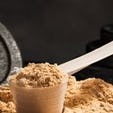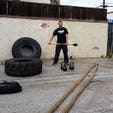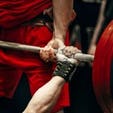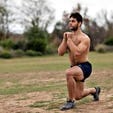Chances are, if you’re training like a high-performance primal athlete you’ll suffer from the occasional ache and pain. And knee problems are the most popular area of discomfort most athletes experience, especially when you’re building a high-performance body.
If you have experienced long-lasting or sharp pain you may need to see your doctor and and the recommendations in this article likely aren’t for you.
But if you’re subject to the occasional knee problems that come out of nowhere and throws a wrench in your training, then you have a couple of options:
1. Throw in towel and limit your progress.
2. Dial back your training, and make knee-friendly alterations to your programming to reduce knee stress and train consistently.
Opt for the later. Here are five steps to train around knee problems while building a strong and resilient athletic body.
1. Attack Hip and Ankle Mobility
When our knees hurt, we should focus our attention on the knee, right? Not exactly.
While acute injuries happen, more often than not chronic, irritating knee problems happen due to poor mobility and stability above and below a joint. In the case of the knee, that means the hip and ankle.
The first plan of action is to mobilize the joints, then reinforce movement with greater stability. Think of it like digging out an appropriate sized foundation and then reinforcing it before piling on top.
Mobile hips are essential for active and fully firing glutes. Studies have shown that a greater range of motion begets greater activation.
Thus, in the case of tight hips, we want to mobilize a joint so the supporting muscles can activate to a higher degree.
Exercises to Improve Hip Mobility
Groiner with T-Rotation
Warrior Stretch
Hip Circles of Circumduction
Ankle range of motion, specifically dorsiflexion, or pulling the toe “up” towards the shin, is important for knee health. For basic exercises like squatting, dorsiflexion allows the knees to drift beyond the toes while keeping the heel flat on the floor.
Healthy dorsiflexion improves quad activation and helps keep the knee from valgus collapse, or diving inward. For athletic performance, greater dorsiflexion allows a greater shin angle on exercises like sprinting, which can improve sprinting speed by improving leverage through the hip, knee, and ankle.
Wall-Ankle Mobilization Drills to Improve Ankle Mobility
Wall Ankle Mobilization
2. Reinforce Mobility with Stability
Joint pain rarely occurs due to direct trauma; rather, often originate above or below a joint. In addition to improving mobility, we need to reinforce movement with stability. As it relates to knee problems, immobile hips and deactivated glutes are common problem areas.
Our glutes are the powerhouse of athletic movement and essential to preventing both knee and back pain, but their strength is often hindered by unbalanced training or a sedentary lifestyle
The glutes are composed of three muscles:
Gluteus maximus: Responsible for hip extension and external rotation. Stand up, extend your leg backwards, and feel your “butt” fire up. Now, rotate your toe away from you. That’s how your gluteus maximus works.
Gluteus minimus: Don’t let the name “minimus” fool you—this bad-boy is important. Your gluteus minimus aids in bringing your leg forward, out to the side, and internal/external rotation.
Gluteus medius: A key player is stabilizing your hips, the gluteus medius abducts, or brings your leg out to the side and helps prevent your knee from dipping in, termed valgus collapse. Stand up, pick your right foot off the ground, and bring your right foot out to the side. That muscle firing up by your pocket is your glute medius.
Keeping injury prevention and booty gains in mind, we need to spend time firing up the glutes during a warm-up. This provides greater support to the knee (and lumbar spine) once it’s time to train.
Pick one exercise focused on hip extension and one exercise for abduction and add them to your warm-up for one set of eight reps each. Instead of rushing, pause and hold position at the end range of every rep .
Hip Extension Exercises (primarily gluteus maximus, also the hamstrings)
2:1 Supine Hip Thrust
Hip Thrust
Single Leg Hip Thrust
Quadruped Hip Extension
Hip Abduction Exercises: (Gluteus Maximus, Gluteus Medius, Gluteus Minimus, and Tensor Fascia Latae)
Clamshell
*Bonus points for gazing into the eyes of passersby
X Band Walk
Quadruped Fire Hydrant
Activation is much more simple for your ankle. After mobilizing the joint, add pogo jumps, skip rope, or go through skips or cariocas while bouncing off the ball of the foot. Keep the toe “dorsi-flexed” to create a rigid lever. This stabilizes the ankle and prevents power leaks with explosive movement.
3. Be Mindful with Lunges and Split Squats
No exercise is inherently bad. In the case of lunges and split squats, narrow stances and forward lunges can increase knee problems due to tibial inclination and subsequently shear stress. That’s a complicated way of saying your shin drifts forward over the toes, which can aggravate the knee.
There are two key training alternatives to reduce knee stress without ditching lunge or split squat variations:
1. Move to a longer split. This keeps the shin “vertical,” loading the glute and hamstring more than your quads, and reduce shear stress on the knee.
2. Ditch forward lunge variations for step back lunges. This keeps your shin angle vertical, while allowing the increased complexity of a lunge over a split squat.
In either case, the goal is to keep your shin vertical to reduce shear stress at the knee.
4. Hip Dominant and Hamstring Work First
It’s natural to train what we see in the mirror. That’s why you see so many folks walking around with big biceps and internally rotated shoulders, but small traps, erectors, and pancake flat asses.
In a general sense, we all need posterior chain work to look better naked and prevent injury. As it pertains to knee problems, we need more hip dominant work to reduce shear stress and reinforce the hamstrings and glutes which support the knee.
Hinge movements like deadlifts and kettlebell swings are more hip dominant than squats or lunges. Make them your primary focus for lower body training to hammer your glutes and hamstrings.
Making your posterior chain the main focus improves support and stabilization for the knee, while giving your knee a break from the same intense loading.
Here are a few recommendations for integrating hip and hamstring work:
– Work your hamstrings and glutes before knee dominant exercises. This could be a stability ball leg curl or glute bridge variation.
– Replace squats with deadlifts as your primary lower body-training tool.
In either case, be careful and note how your knees react in training. Even though deadlifts are hip dominate, the knee is still under compressive loading at the lockout.
5. The Benefits of Reverse Sled Drags
Sleds are an excellent tool to train athletic hip extension without subjecting your knees to insane joint stress. More specifically, reverse sled drags allow you to train your quads without a ton of stress on the knee.
Why sleds?
It’s simple—there is no eccentric (lower phase) on sleds. Instead of lowering weight under control like a squat, you must overcome friction, which is easier on the joint. I’ve used reverse sled drags as a main exercise or a finisher when training around knee pain. They’ll allow a high-training volume without aggravating your knees.
Knee Problems Summary
Knee problems are a sign that something isn’t quite right. If pain persists, go to your doctor and make sure there isn’t an underlying serious issue. Then, get back to training around pain to build a strong, athletic, and resilient body. In summary, try and incorporate these 12 exercises in your workout routine to help alleviate knee problems.
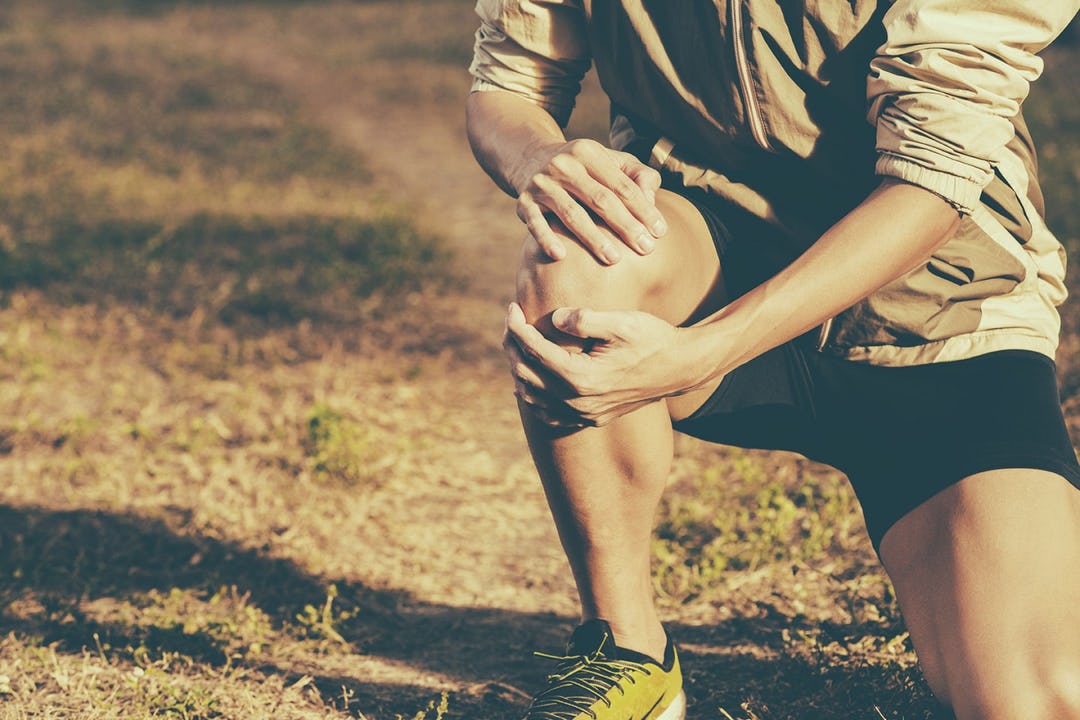
)
